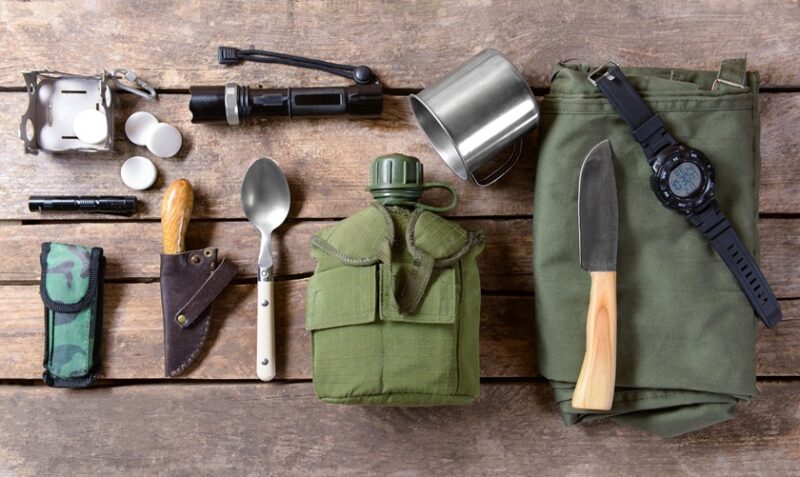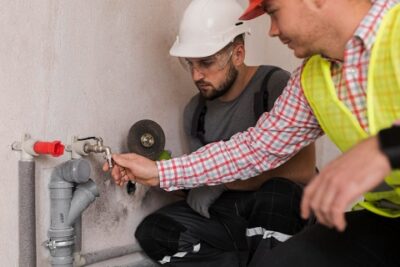Does it feel sometimes like the world is going crazy right now? Folks have been saying this for generations, but it does feel like the 21st century is more unpredictable and chaotic than the other times humans have been alive.
The truth is unforeseen events can happen at any moment. While we cannot control every aspect of our lives, we can take proactive steps to be prepared for the unexpected.
From natural disasters to personal emergencies, staying ready for the worst can make a significant difference in how we navigate challenges.
In this comprehensive guide, we will explore the importance of preparedness, the key elements of readiness, and the survival strategies individuals can use to stay ready for a variety of scenarios.
Risk Assessment: Know Your Vulnerabilities
Begin your preparedness journey by conducting a thorough risk assessment. Identify potential hazards and vulnerabilities in your environment, taking into consideration both natural and man-made risks.
This could include earthquakes, floods, fires, power outages, or even personal health emergencies. Understanding the specific risks you face is the first step toward effective preparation.
Emergency Kits: Assembling Your Essentials
An emergency kit is a fundamental component of readiness. Prepare a well-stocked kit that includes essential items such as:
- Non-perishable food
- Water
- First-aid supplies
- Flashlights
- Batteries
- Medications
- A multi-tool
- Important documents
Tailor your kit to meet the specific needs of your family, including items for infants, elderly family members, and pets.
Communication Plan: Stay Connected
Establish a communication plan with your family and loved ones. Identify a central point of contact, such as an out-of-town relative, and ensure that everyone has their contact information.
In times of crisis, communication can be challenging. Having a predetermined plan ensures that everyone knows how to connect and share information.
Home Preparedness: Create a Safe Environment
You can make your home a safe haven by implementing measures that mitigate potential risks.
Install smoke detectors, carbon monoxide detectors, and fire extinguishers. Secure heavy furniture and appliances to prevent them from toppling during earthquakes or other disasters.
Know the location of utility shut-off valves and teach family members how to turn them off in case of emergencies. Learn more about generator installation and maintenance so you are never without power during an emergency.
Emergency Plans: Practice Makes Perfect
Develop comprehensive emergency plans that outline specific actions to take in various scenarios. Conduct regular drills with your family to ensure that everyone knows what to do.
This includes:
- Evacuation procedures
- Meeting points
- Contact information
Regular practice builds muscle memory, making it easier to respond effectively during an actual emergency.
Financial Preparedness: Establish a Safety Net
Financial stability is a key aspect of overall readiness. Establish an emergency fund to cover unexpected expenses that may arise during challenging times.
Keep important financial documents, such as insurance policies and account information, organized and easily accessible. Understand your insurance coverage and ensure that it aligns with potential risks in your area.
Community Engagement: Strength in Unity
Engage with your community to foster a sense of shared responsibility and support. Participate in local emergency preparedness initiatives, such as community drills or awareness campaigns. Building strong community ties enhances collective resilience and ensures that everyone is working together toward a common goal.
Share your knowledge and enthusiasm for preparedness with others in your community. Encourage neighbors to engage in preparedness activities, exchange information, and collaborate on initiatives that enhance overall community resilience. A culture of preparedness contributes to the safety and well-being of everyone.
Stay Up-to-Date on Risks and Developments
Regularly monitor weather forecasts, news updates, and local alerts to stay informed about potential risks and developments in your area. Knowledge is a powerful tool in preparedness, allowing you to make informed decisions and respond promptly to changing circumstances.
Regularly Update Emergency Kits: Ensure Supplies are Current
Emergency kits should be periodically reviewed and updated to ensure that all supplies are current and in good condition.
- Check expiration dates on food and medications
- Replace expired batteries
- Update any necessary documents
Regular maintenance ensures that your emergency kit is ready for use at a moment’s notice.
Refresh Emergency Plans: Adapt to Changing Circumstances
Life is dynamic, and circumstances can change. Regularly review and refresh your emergency plans to account for any changes in your family structure, living situation, or community. Adjust evacuation routes, communication strategies, and meeting points as needed.
Practice Evacuation Drills: Enhance Response Efficiency
Evacuation drills are crucial for ensuring that everyone in your household knows how to respond in the event of a disaster. Practice different evacuation scenarios, including both leaving your home and meeting at designated locations.
This hands-on approach enhances response efficiency and builds confidence in your ability to handle emergencies. It will also teach you and your loved ones that any emergency could happen at any time and how to prepare for it.
Learn Basic First Aid: Be Prepared to Provide Assistance
Basic first-aid skills can be invaluable during emergencies as health hazards become more apparent during catastrophic times.
Consider taking a first aid and CPR course. This will equip you with the knowledge and skills needed to assist in medical emergencies. Having a basic understanding of first aid can make a significant difference in the well-being of those around you.
Regularly Check Home Safety Measures: Ensure a Secure Environment
Periodically check and maintain home safety measures, such as smoke detectors, fire extinguishers, and emergency exits. Replace batteries in detectors, ensure fire extinguishers are charged, and keep emergency exits clear. A secure home environment is a critical component of overall readiness.
Staying Ready for Whatever Life Throws at You
Survival tips like the ones above aren’t useful if you don’t apply them to your life. So take a weekend or two to set up your emergency kit and do everything else suggested.
The more steps you take, the more your powerlessness will dissipate. Action will make you realize that you can protect yourself and your family no matter what storm approaches.
If you liked this article on staying ready and wish to learn more, keep browsing through our website.










